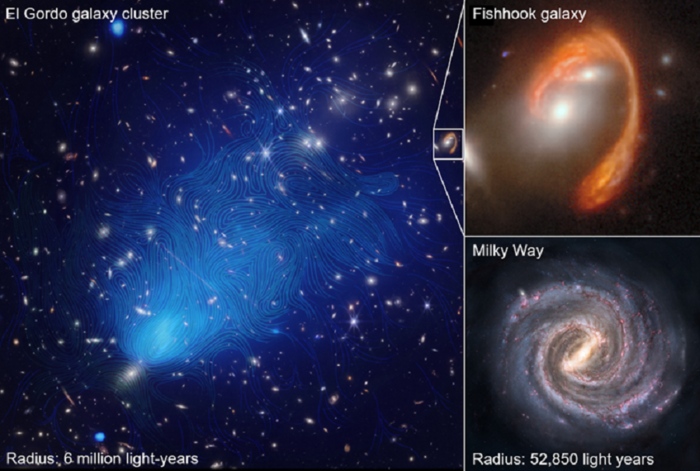The largest magnetic field permeating five cosmic giants made up of colossal galaxy clusters has been mapped for the first time.
Among these also the famous 'El Gordo', the most massive ever observed at great distances and which dates back to the time when the universe was about 6.2 billion years old, just under half its current age.
El Gordo boasts a radius of about 6 million light years, larger than that of the Milky Way, which is 52,850 light years.
Published in the journal Nature Communications, the result is fundamental for better understanding the evolution of the universe and is due to international research led by the American University of Wisconsin-Madison, in which Italy participated with the University of Bologna and l National Institute of Astrophysics.
The magnetic fields found within galaxy clusters are crucial for shaping the evolution of the gas contained in these structures and for accelerating or confining high-energy charged particles and cosmic rays.
However, the large distances at which the clusters are located and the complex interactions between gas flows that occur within them make it extremely difficult to map the magnetic fields on such vast scales.
To achieve this, the researchers led by Yue Hu therefore had to apply an innovative technique.
"Using this innovative approach offers us a new way to observe and understand the distribution of the magnetic field in regions that were inaccessible to traditional methods", observes Chiara Stuardi of INAF, co-author of the study.
"After these extraordinary results we can think of applying the same method to analyze even larger cosmic structures, such as the filaments that connect galaxy clusters", says Stuarti.
"Being able to delve deeper into the mysteries of magnetism - adds Annalisa Bonafede of the University of Bologna, one of the authors of the study - can help us better understand its effects on the evolution of the large-scale structure of the universe".
Reproduction reserved © Copyright ANSA

